Story
Did you spot these “unusual sea creatures” in Cornwall recently?
5 September 2023
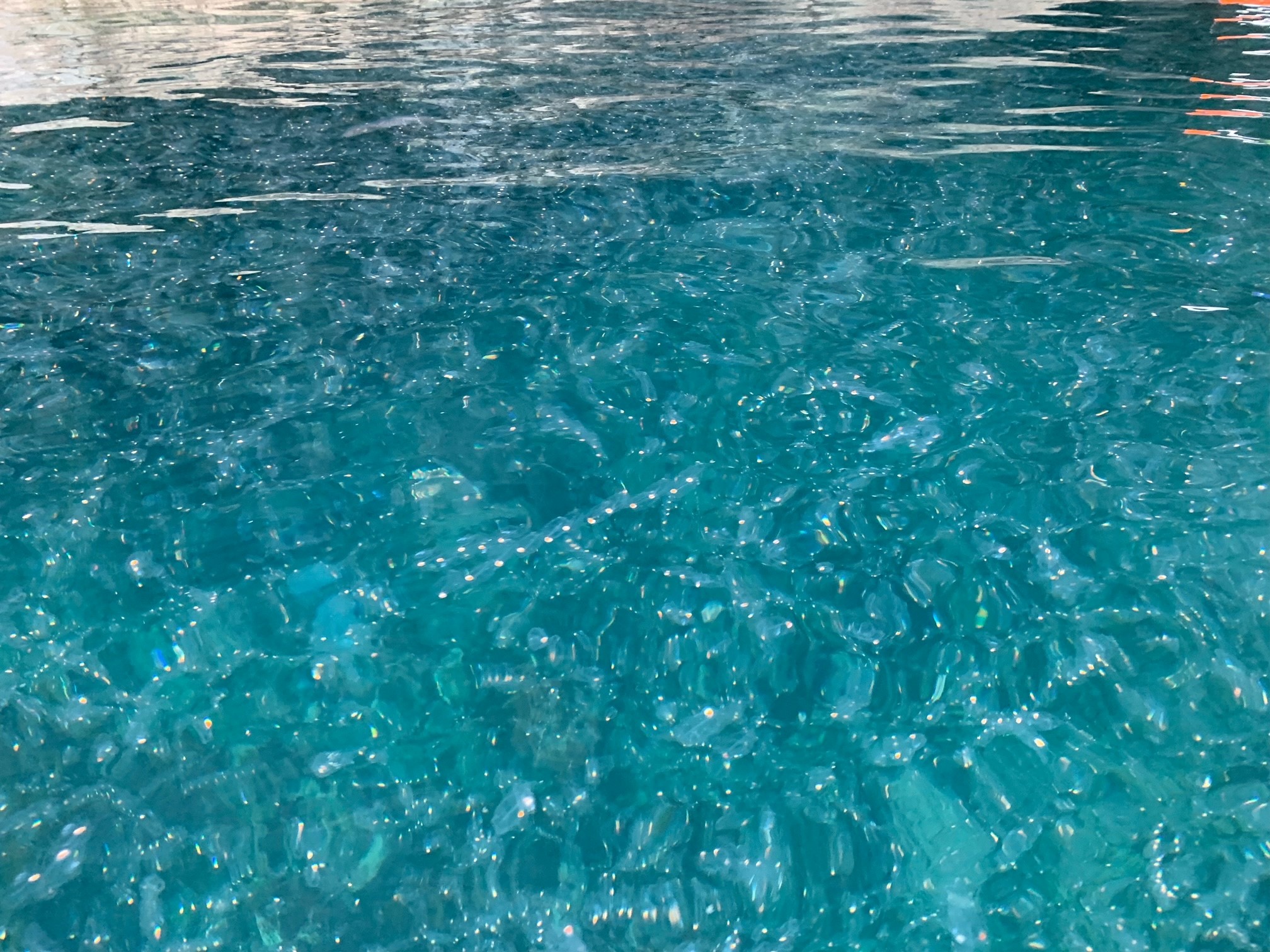
Plymouth Marine Laboratory received an email last week querying the identification of “unusual sea creatures” spotted in the waters in Cornwall.
Our Marine Ecology and Biodiversity team were delighted to receive the photos from Adrian Evans, who came across the animals on a kayaking trip around Cadgwith Cove in Cornwall, alongside members of the Teignbridge Canoe Club.
Adrian said: “I wondered if you could help me to identify some unusual sea creatures found off the Cornish Coast this weekend? Each was about 2cm long, translucent, jelly-like, with a distinctive spherical centre (like a small egg). Tens of thousands had accumulated in the rocky gullies either side of Cadgwith Cove, along with a good number of various types of jellyfish. They seem to be concentrated under the surface, although looked to be present throughout the water column. Most were single, others were formed in long strings? I have attached a few photos. Hopefully you can make them out by zooming in.”
He added: “I have fished, dived, swam and kayaked around the coast for 50 years - and not seen them before. I have looked in books and online and can’t work out what they are? Can you help?”
Our Plankton Ecologist Andrea McEvoy took a look at the photos and identified the animals as Salps.
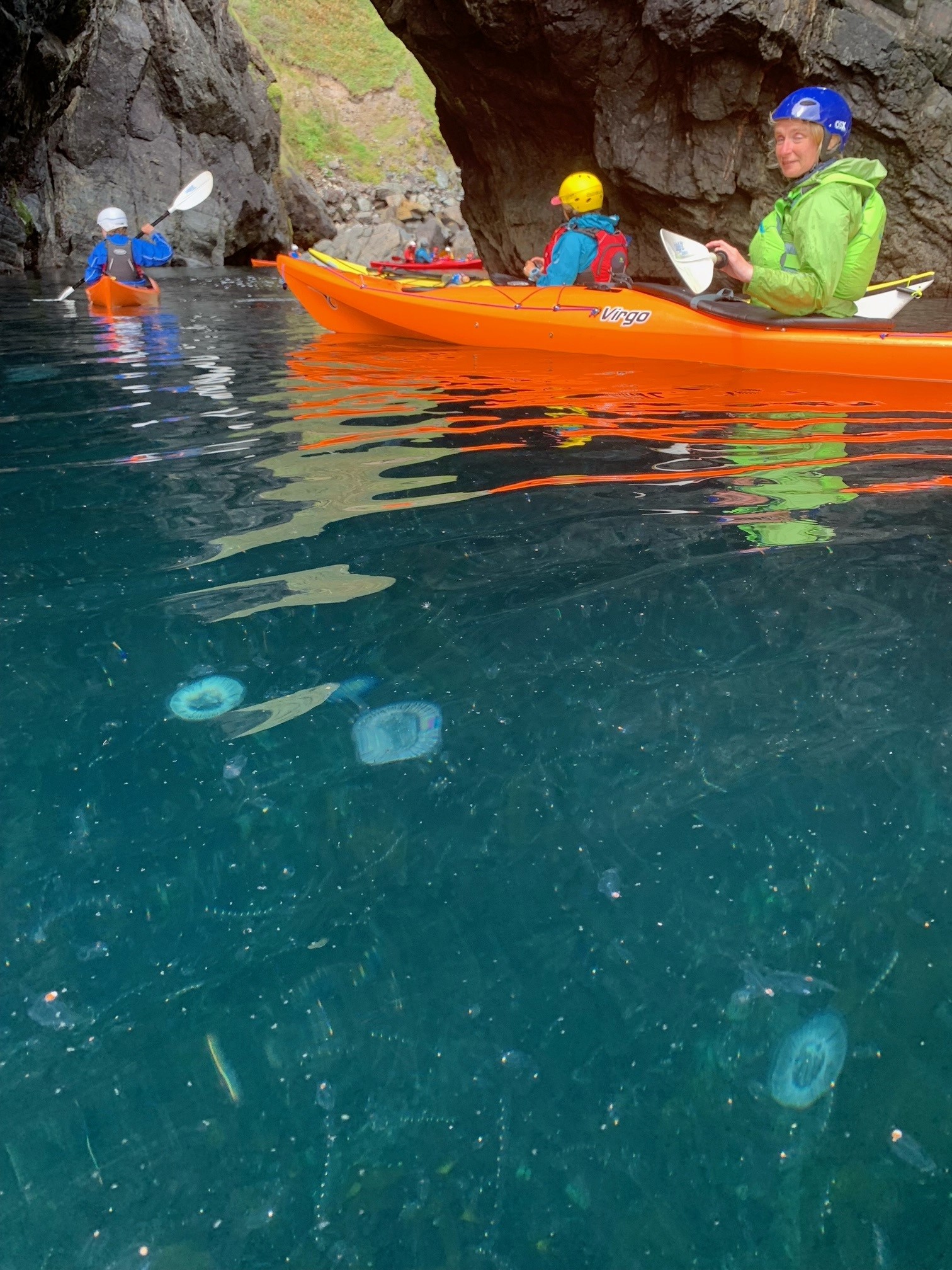
Photo credit: Adrian Evans. Photo of Salps and Jellyfish taken around Cadgwith Cove, Cornwall.
Andrea commented on the news:
“Many people have been reporting sightings of Salps around our Devon and Cornish coast - they have been around in huge numbers in the last few weeks. And our long-term monitoring station at L4 is no exception, where, weekly, we collect samples from the ocean, about 6 nautical miles south of Plymouth, as part of data collection for the Western Channel Observatory.”
“Their gelatinous bodies could easily be confused with being a type of jellyfish, but Salps are actually planktonic tunicates, belonging to the family Salpidae.”
What are Salps?
‘Salps belong to the phylum Chordata. They are characterised by having a notochord, a fore-runner to the spinal cord, so are more related to us than people might think.
Salps are extremely efficient filter feeders, pumping large quantities of plankton laden seawater through their bodies. Their life cycle demonstrates an alternation of generation which allows fast development time, perfect for making the most of phytoplankton blooms and giving them a competitive advantage over some zooplankton. These two factors lead to an explosion of numbers and mean they are capable of clearing the water of most other plankton in a very short space of time.
With so many salps around that also means there is plenty of poo! Their comparatively large and fast-sinking faecal pellets make them potentially important in the transport of organic matter to the benthos.
It is unlikely they would survive the winter in our waters but studies suggest changes in their abundance and distribution could play a role in the carbon cycle and climate change.’
(Source: Towards an understanding of salp swarm dynamics. Kremer, P. 2002).
Andrea adds:
“Interestingly, Salps made a splash in the recently published 2022 South West Marine Ecosystems report, with unusually high numbers of salps during June and July last year. They have arrived a little later this year, but once again in high numbers. PML is a big contributor to the SWME report, which provides excellent information on marine ecosystems in our local area.”
Access the South West Marine Ecosystems 2022 Report here >>
‘The year was unremarkable for plankton, the main feature of note being unusually high numbers of salps (gelatinous filter feeders un-related to jellyfish) during June and July. While the plankton was ‘normal’ compared to other recent years, it aligns with a large-scale, long-term and radical change driven by climate, whose consequences we are exploring.’ [Source: SWME 2022 report]
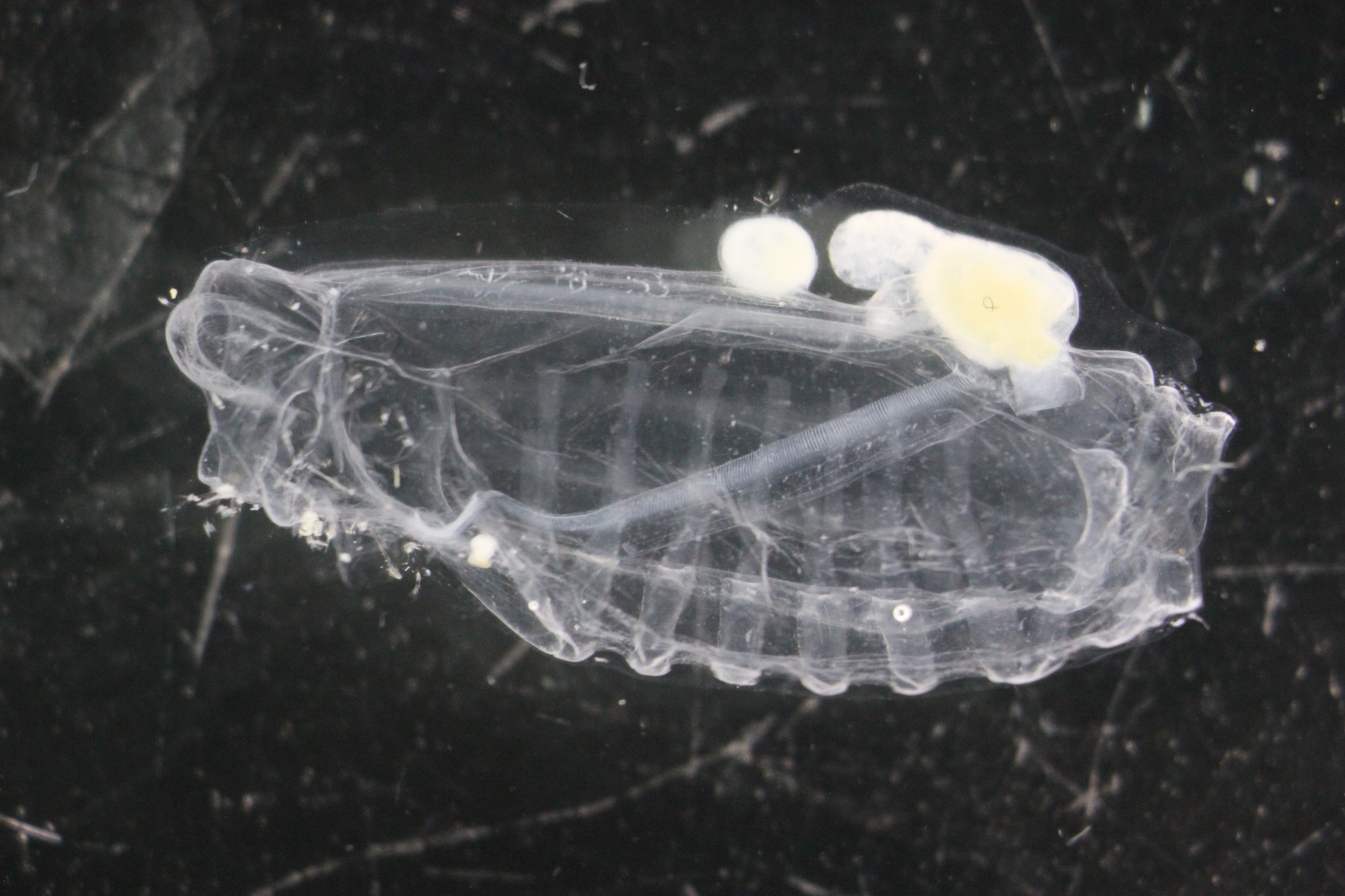 Above: Salpa fusiformis - this oozooid solitary stage reproduces asexually, budding off many identical young blastozooids in a few days. This photo taken by Andrea came from a recent sample from the L4 monitoring site, about 6 nautical miles south of Plymouth, as part of data collection for the Western Channel Observatory. Photo credit: Andrea McEvoy.
Above: Salpa fusiformis - this oozooid solitary stage reproduces asexually, budding off many identical young blastozooids in a few days. This photo taken by Andrea came from a recent sample from the L4 monitoring site, about 6 nautical miles south of Plymouth, as part of data collection for the Western Channel Observatory. Photo credit: Andrea McEvoy.
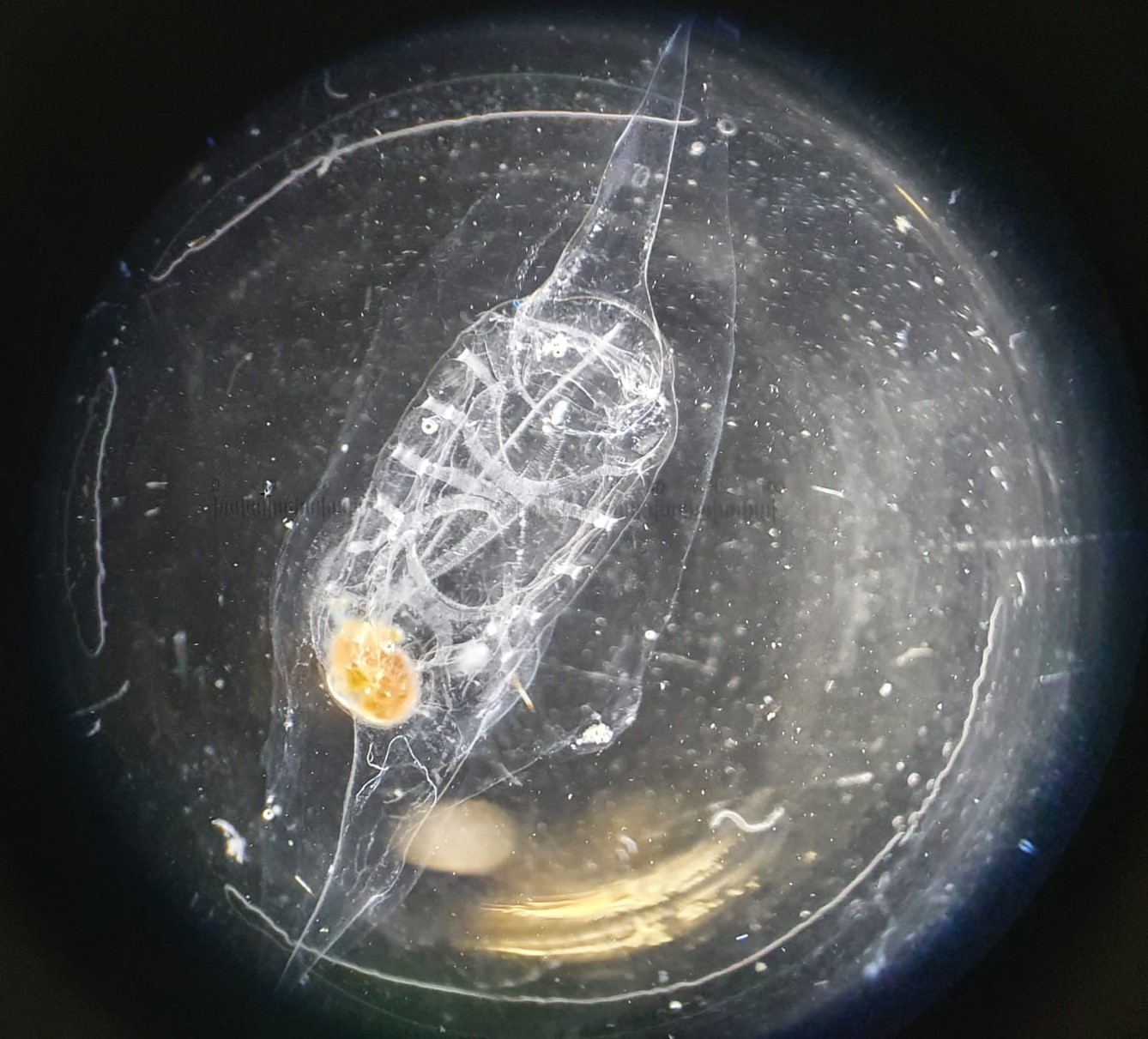
Above: Salpa fusiformis in the blastozooid stage, photo taken under the microscope by our Amanda Beesley in June 2022, from a sample taken at L4. The blastozooids are sequential hermaphrodites. Initially developing as a female, once fertilized the older chains become males. An embryo develops by internal fertilisation and is initially nourished via a primitive placenta before release. Photo credit: Amanda Beesley.
Andrea shared the identification of the Salps with Adrian Evans, who added:
“In places the Salps were so numerous, I could scoop them out by hand. We were all puzzled as to what they were - with suggestions ranging from juvenile jellyfish, to cuttlefish eggs. I was grateful to PML for being able to unravel the mystery for us. The sighting generated a lot of interest in marine life amongst our club and we will be keeping our eyes peeled when next on the water.”
“In addition to the Salps, there were a good number of jellyfish species. The main photo of the rock arch is The Devils Frying Pan - a collapsed sea cave west of Cadgwith Cove.”
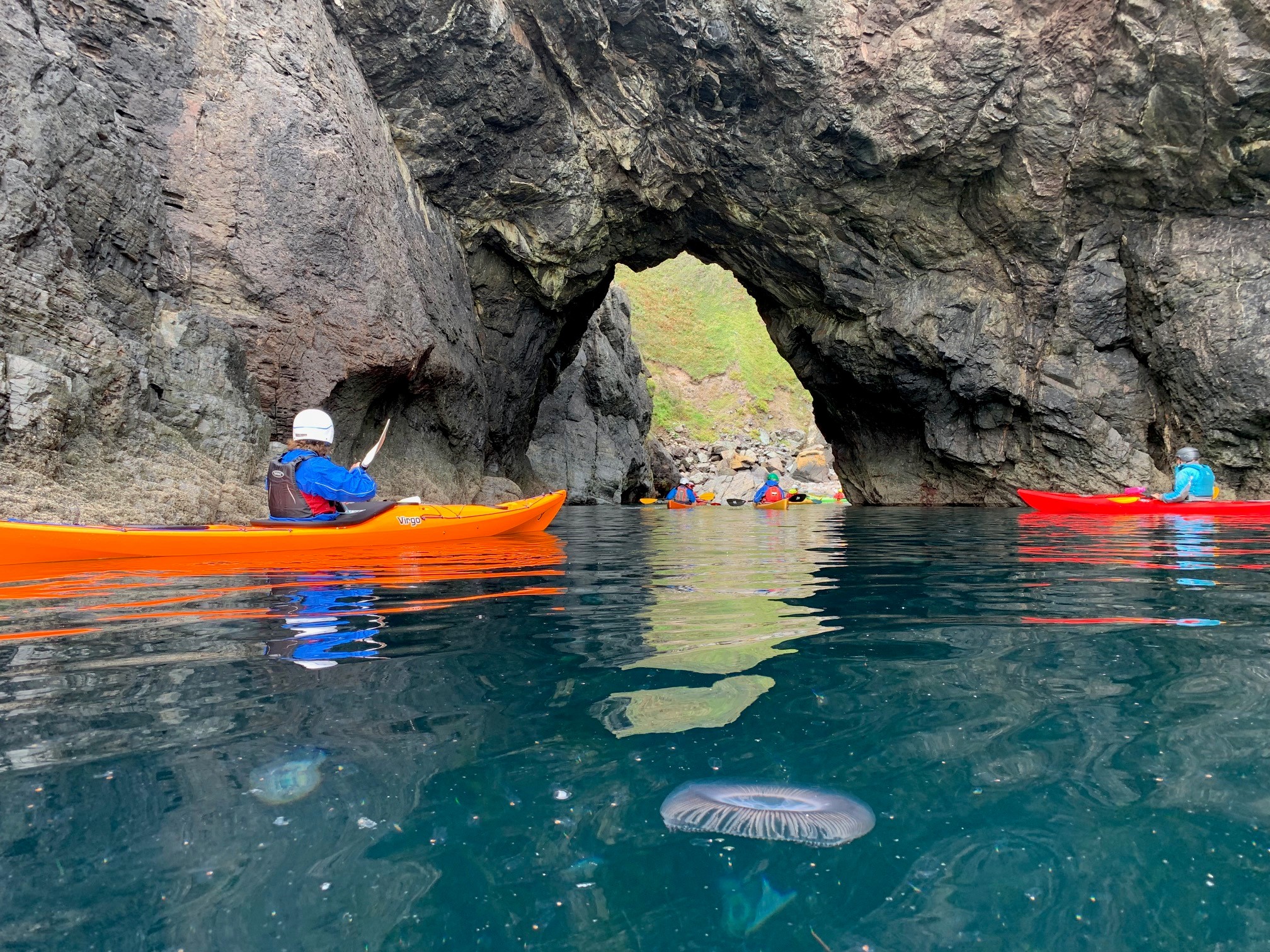
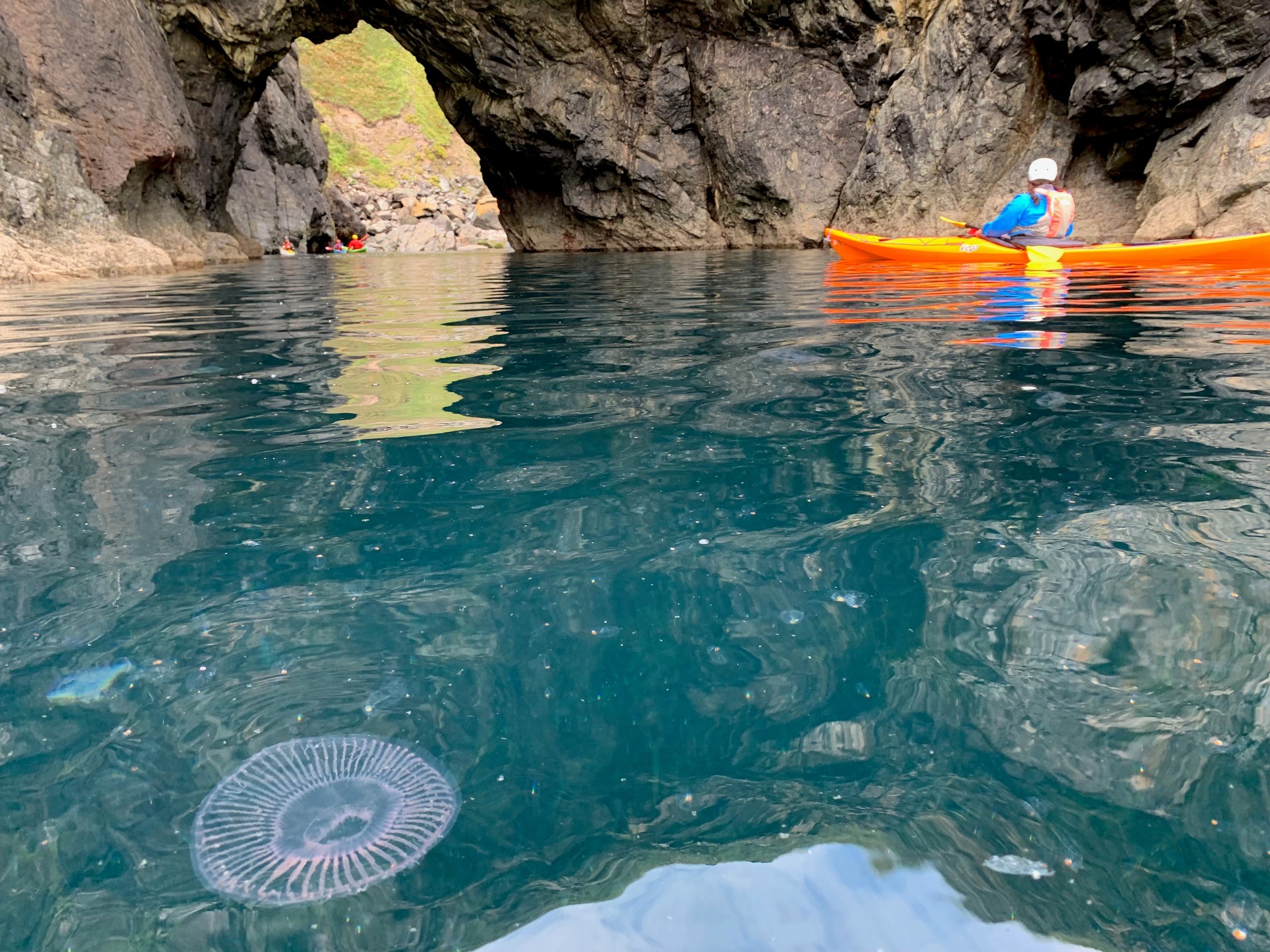 Photo credit: Adrian Evans. Photo of Salps and Jellyfish taken around Cadgwith Cove, Cornwall.
Photo credit: Adrian Evans. Photo of Salps and Jellyfish taken around Cadgwith Cove, Cornwall.
Our Deputy Head International Office & International Marketing and Business Development Executive Thecla Keizer mentioned that she had also seen Salps over the weekend with her partner James Roberts. The following photos were taken at Sennen Cove by James and show some of the Salps washed up on the shore.
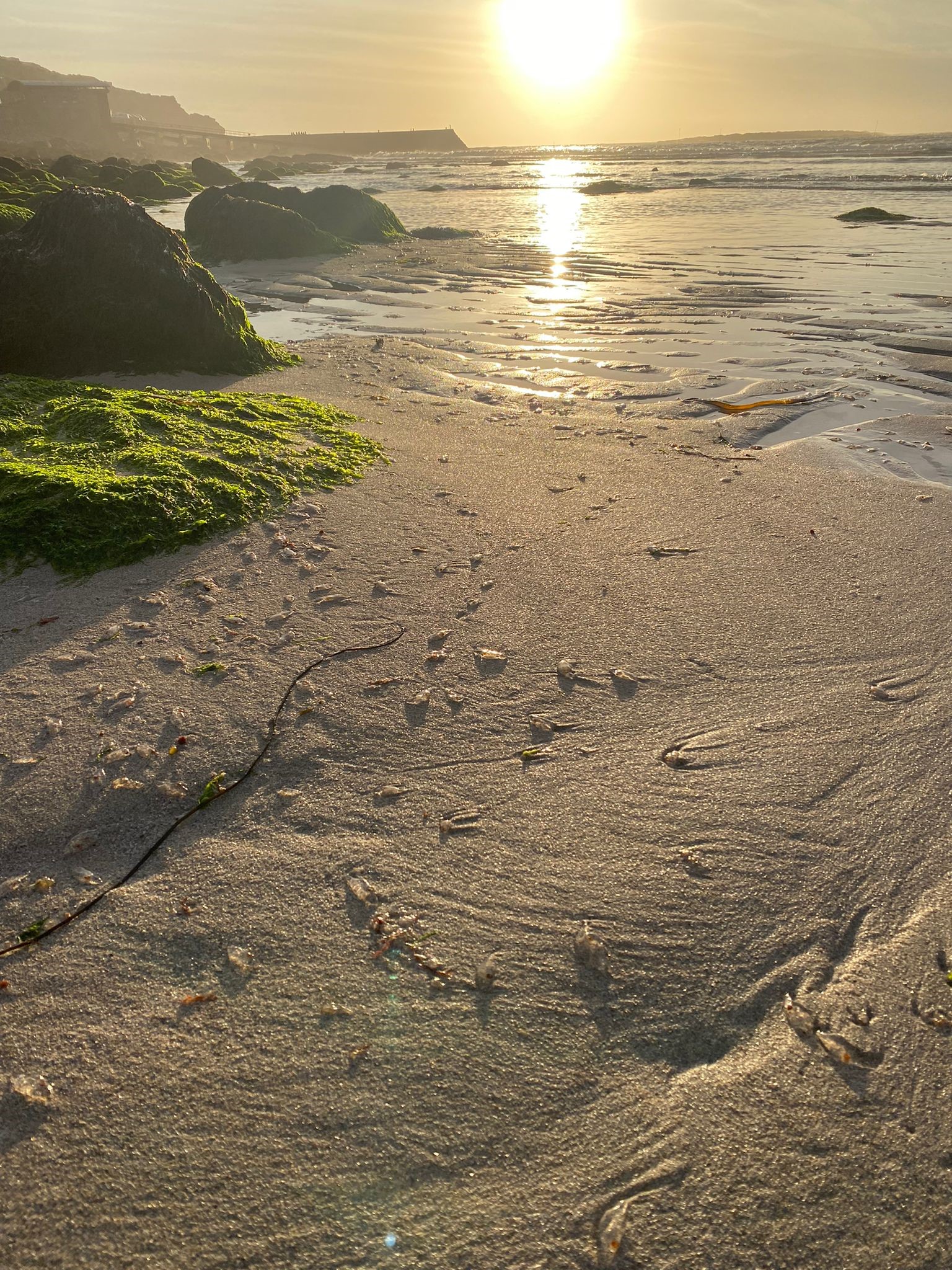
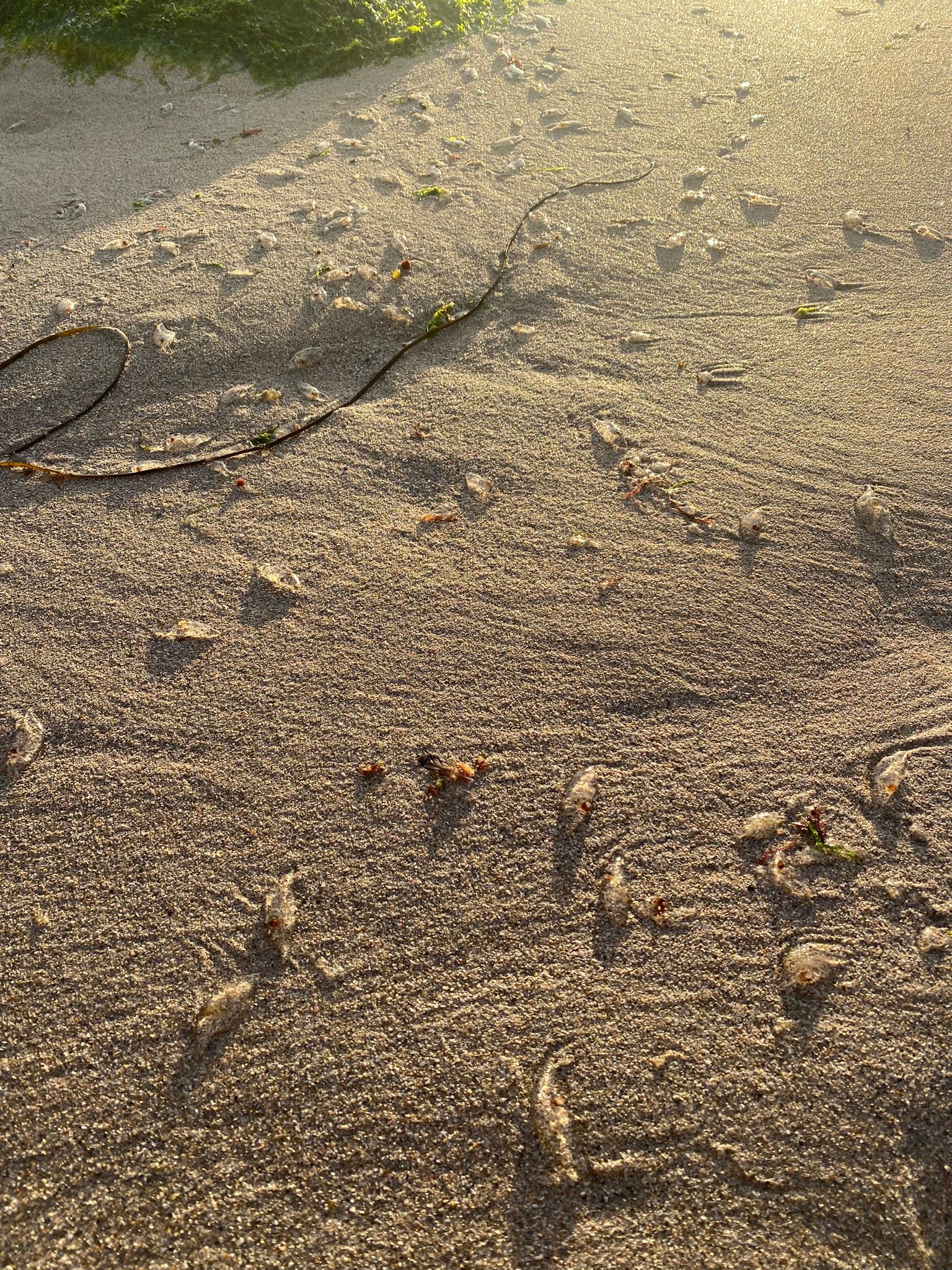
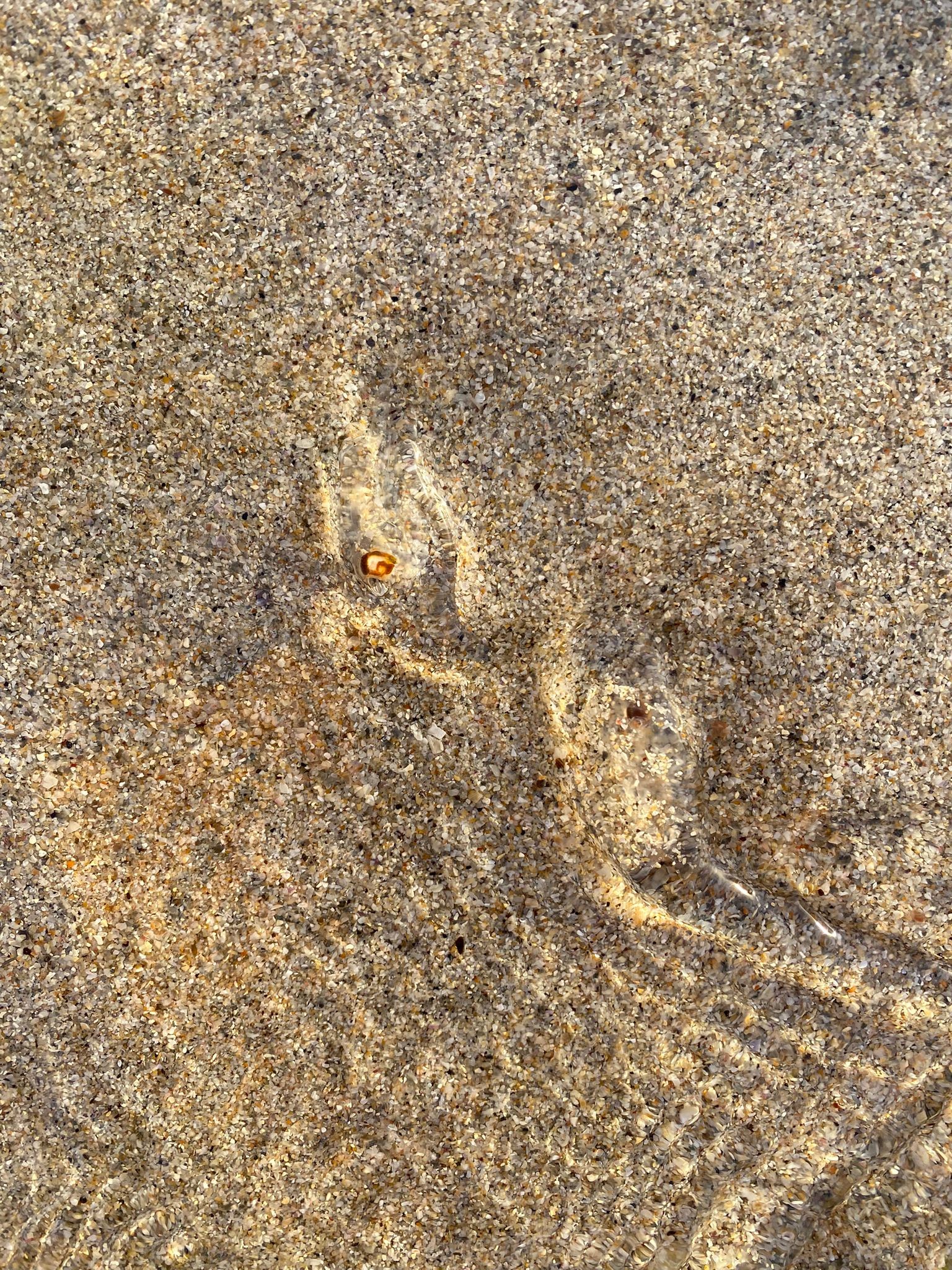
Photos credit: James Roberts. Salps washed up on the beach at Sennen Cove, Cornwall.
There have also been some fantastic videos taken recently of the Salps, like this one from Aquacity Freediving via Jeanette Sanders (Plymouth University):